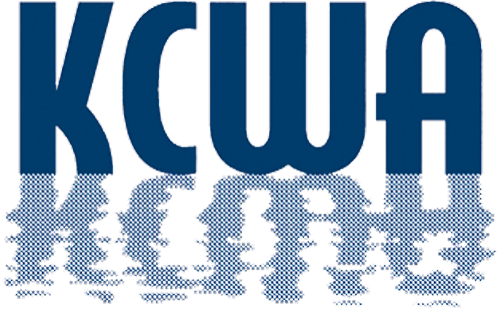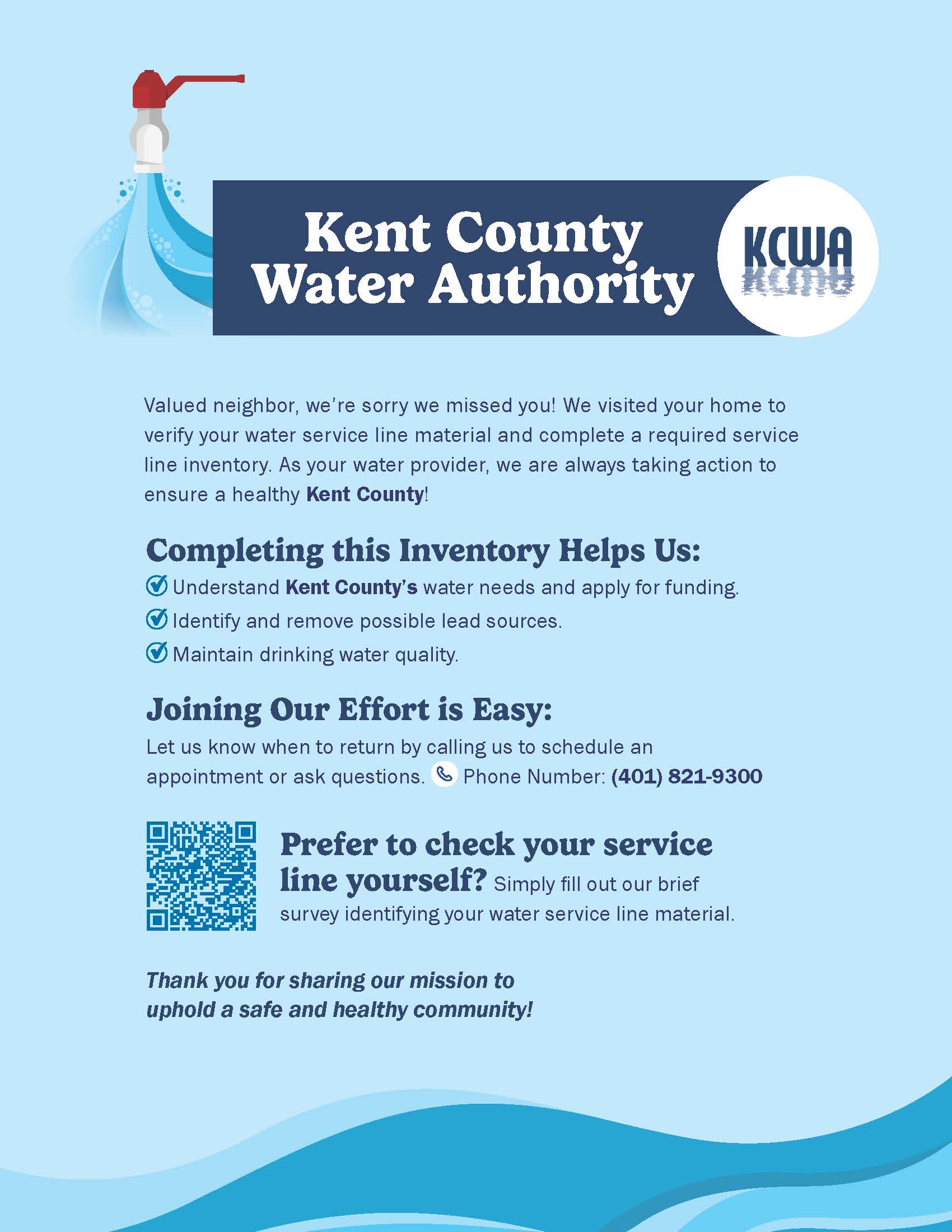
PLEASE CLICK THE BUTTON BELOW TO VIEW OUR LEAD SERVICE LINE INVENTORY MAP
You can search the map by building address to see the service material type for your home or business

HELP KCWA " GET THE LEAD OUT" BY FILLING OUT THIS SIMPLE SURVEY
The Kent County Water Authority is undertaking a federally mandated survey of all customer service pipe materials. The goal of this program is to identify lead components of the drinking water system. KCWA completed this survey and submitted the results to RIDOH prior to October 16, 2024 as required under the law. KCWA has been working to identify both public side and private side service lines for several years in anticipation of requirements in the revisions to new Lead and Copper Rule. Through extensive records research and field surveys conducted during our meter change out program, KCWA has confirmed the material type over 25500 out of the 27500 service lines in the system for both the private and public side. We are on the final push to get the last information which resides on the private side of the curb stop and we need your help. All customers that have an unknown service type in their home or business will receive a letter from KCWA that provides program information and steps we can take to determine the private service line material. The steps in the letter are also in the FAQ section below.
While there have been no identified instances of lead action level exceedances at KCWA, we are mandated to identify and address any potential sources of lead that may exist. KCWA is required by law to replace all existing lead and galvanized service lines over the next ten years to ensure the quality of drinking water and protect the health of our residents. We maintain a strong commitment to continuous monitoring, rigorous testing, and targeted infrastructure improvements to minimize lead exposure and maintain the highest standards of water safety. We encourage our residence to stay informed about our ongoing efforts and collaborate with us to establish a lead-free water system.
LINK TO SURVEY BELOW (You can click on or scan QR code below)
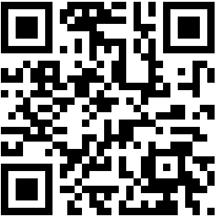
OR
You can also email photos of your plumbing, including the water meter and where the service line enters the building, to [email protected]. Please be sure to include your service location address and/or account number in the email.
The EPA has a step by step procedure that you can use to determine your service line material type on their website (https://www.epa.gov/ground-water-and-drinking-water/protect-your-tap-quick-check-lead-0). You can also follow the steps below to determine the material of your service line.
Steps to Determine the Material of Your Service Line
STEP 1
Locate the service line entering the building. Check your basement, looking along the exterior walls on the side of the building facing the street. The service line pipe will come into the building through an external wall or the floor and connect to the water meter.
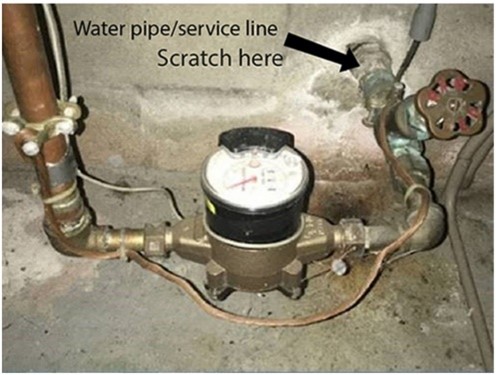
STEP 2
Use a key or a coin to gently scratch the surface of the pipe close to where it comes in through the wall or floor.
STEP 3
Look at the color of the pipe after you scratch it. Each type of pipe will produce a different type of scratch and react differently to a magnet.
If your service line is copper:
The pipe may appear dull brown but will be the color of a bright penny if gently scratched. A magnet WILL NOT stick to copper.
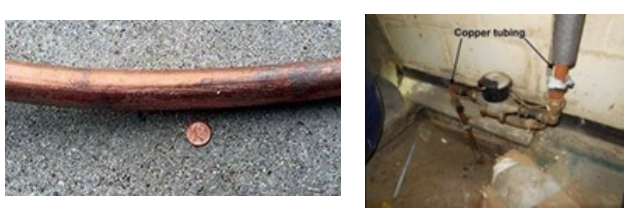
If your service line is lead:
The pipe will appear dull and soft but will turn a shiny silver color when gently scratched. A magnet WILL NOT stick to lead.

If your service line is galvanized steel:
The pipe will remain a dull gray color when gently scratched. A magnet WILL stick to galvanized steel.

If your service line is plastic:
The pipe can be various colors such as white, blue, black, or green and will not scratch. A magnet WILL NOT stick to plastic.

STEP 4
Submit your results. Fill out this survey

OR Email photos of your home’s plumbing, including the water meter and where the service line enters the building to [email protected]. Please be sure to include your service location address and/or account number in the email.
Lead Frequently Asked Questions
What is a service line?
A service line is a small, buried pipe that brings water from water mains in the street into homes and other buildings. The service line consists of two sections: the public side and the private side. The public side of the service line runs from the water main to the curb stop (a valve that is often located near the property line or sidewalk) and the private side runs from the curb stop to the home. If any part of the service line is lead, it can release lead into your drinking water. Galvanized service lines may contain materials consisting of lead and are considered to be lead service lines by the RI Lead Poisoning Prevention Act. Kent County Water Authority’s goal is to replace all lead and galvanized service lines in the communities we serve within 10 years in accordance with Federal regulations and RI Legislation.
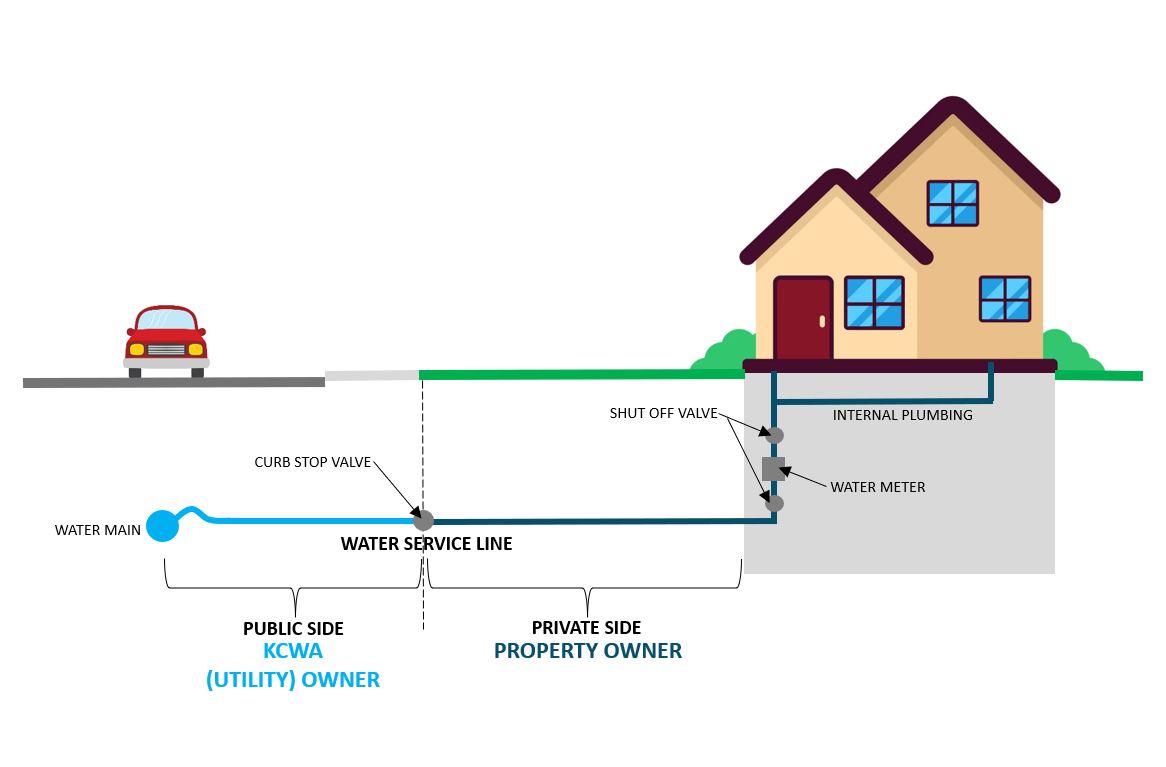
How do I find out if I have a lead service?
You can search the map (button link below) by building address to see the service material type for your home or business.

What is lead? How does lead get into my water?
Lead is an element that occurs naturally in the environment. The drinking water that leaves the Mishnock and East Greenwich Well treatment plants and our wholesale interconnections with Providence Water has no detectable levels of lead. It is also important to note that the 90th percentile value for the Kent County Water Authority water system is below the lead action level of 15 parts per billion (ppb). Under the Safe Drinking Water Act, the Environmental Protection Agency (EPA) set the action level for lead in drinking water at 15 ppb. This means that we are required to ensure that water from the customer’s tap does not exceed this level in at least 90 percent of the homes sampled for lead (90th percentile value).
Lead can enter drinking water when the water comes into contact with materials that contain lead. These materials may include lead service lines that connect your home or business to the water main in the street as well as lead pipes in your home and parts of your plumbing, including chrome-plated brass faucets.
What are the health effects of lead?
Anyone can suffer health effects from exposure to lead, but lead is most dangerous to children younger than 6 years old and people who are pregnant. Lead can hurt a child’s brain and nervous system and slow down growth and development. People exposed to lead as children can have lifelong difficulties with learning and behavior and may have trouble paying attention. Even small amounts of lead can harm a child. Adults can have increased risks of heart disease, high blood pressure, kidney or nervous system problems. While it is rarely the primary cause of lead poisoning in Rhode Island, drinking water can be a source of lead. Lead and galvanized steel pipes were used in water infrastructure for much of the 1900s and were banned from use in Rhode Island in 1978. Lead solder was used to fuse pipe segments together until 1987. If a building was built or plumbed before 1987, it could have plumbing materials containing lead.
For more information on reducing lead exposure from your drinking water and the health effects of lead, visit EPA’s website at https://www.epa.gov/lead.
Why and when are lead service lines being replaced? Who is paying for the replacement?
Kent County Water Authority is required to replace lead and galvanized service lines over the next 10 years. KCWA has partnered with the EPA and RIDOH as part of the Get-the Lead Out (GLO) Initiative to develop a full replacement plan over the next year. It is KCWA's goal to replace all lead and galvanized service lines in the next couple of years following the plan funding and deployment ahead of the ten year deadline. The private and public lead and galvanized service line replacement will be funded under the Rhode Island Drinking Water State Revolving Fund as administered by the Rhode Island Infrastructure Bank for approved projects listed on the Rhode Island Department of Health Project Priority List. The Rhode Island Division of Public Utilities and Carriers once deployed.
Important: If you or the property owner (if different)decide to replace the private side portion of a lead service line on your/their own ahead of the program, please contact the Kent County Water Authority. The Kent County Water Authority must attempt to coordinate simultaneous replacement of the public side portion or replace the public side portion in a timely manner after being notified, at no cost to the property owner.
What happens if a property owner refuses inspection or replacement of private side lead or galvanized service lines service?
From R.I. Gen. Laws § 23-24.6-28 Lead Poisoning Prevention Act
(o) In the event a property owner refuses to allow the inspection or replacement of private side service lines, the water supplier shall file notice of all attempts to inspect or replace the private side service lines and the property owner’s refusal to allow inspection or replacement services with the department. The notice shall state at a minimum: the date and time of each attempt; the name of the person who refused each attempt; and the name and signature of the person who made each attempt. The address where each refusal took place shall be published on the appropriate department website to ensure occupants of the building have notice of the potential lead in the service line. The notice shall be filed within thirty (30) days following the second refusal by the property owner. The notice shall be written as a multilingual document. In the event that a water service line in a rental property is found to contain lead and the property owner declines or is unresponsive, the tenant shall be entitled to make a second (2nd) request to the property owner for service line replacement. If the property owner refuses or fails to respond within sixty (60) days, the tenant shall have the option to terminate the lease. Upon termination, the property owner may not withhold the tenant’s security deposit based upon the tenant’s exercise of their termination rights under this section.
(p) If the property is a rental property, the owner shall inform the tenants of the presence of lead in accordance with § 23-24.6-15(b). If the owner fails to provide tenants with timely notification of the existence of lead in service lines to the building the owner shall be subject to civil penalty in accordance with § 23-24.6-27.
How can I verify my service connection material?
KCWA has developed and submitted the latest Lead Service Line Inventory (LSLI) to the RIDOH, available here in a searchable format: https://pws-ptd.120wateraudit.com/KCWA-RI . You can use this map as a starting point to check the status of your service.
- OPTION 1
- KCWA has created an easy online survey form that walks you through the process here: https://arcg.is/0uOnue0.
- OPTION 2
- Photos of your home’s plumbing, including the water meter and where the service line enters the building, may be emailed to [email protected]. Please include address and account number in the email.
- OPTION 3
- One-on-one assistance with the verification of your service line material, please contact the Kent County Water Authority at (401) 821-9300 to set up an appointment with one of our field service agents.
How can I reduce lead in my drinking water?
Below are recommended actions you can take if you are concerned about lead in your drinking water.
-
Use filters. Some filters, if used properly, can reduce lead in drinking water. If you use a filter, it should be certified(NSF Standard 53) to remove lead. Read any directions provided with the filter to learn how to properly install, maintain and use your cartridge and when to replace it. Using the cartridge after it has expired can make it less effective at removing lead. For more information on facts and advice on home water filtration systems, visit EPA’s website at https://www.epa.gov/water-research/consumer-tool-identifying-point-use-and-pitcher-filters-certified-reduce-lead.
-
-
Run the cold water to flush the tap. Flushing the tap means running the cold water faucet for 3 to 5 minutes before using the water for drinking or cooking. Lead can build up in water when it sits still in the pipes. Flushing the pipes will remove the water that may contain higher lead levels. Flush the pipes before using water for drinking or cooking any time the water has gone unused for more than 6 hours. Flushing your home’s pipes can be done byrunning the tap, taking a shower, doing laundry, or doing a load of dishes. Visit the RI Department of Health website https://health.ri.gov/water/about/lead/ for more detailed instructions on flushing your plumbing.
-
-
Use cold water for cooking, drinking and preparing baby formula. Because lead from lead-containing plumbing materials and pipes can dissolve into hot water more easily than cold water, never drink, cook, or prepare beverages and baby formula using hot water from the tap. If you need hot water, draw water from the cold tap and then heat it. Boiling water can kill bacteria, viruses, and other disease-causing organisms, but it will not reduce lead levels.
-
-
-
Remove and clean aerators/screens on plumbing fixtures. Aerator screens are located at the tip of faucets. Over time, particles and sediment can collect in the aerator screen. Remove and clean aerator screens every 2 weeks.
-
What if I choose to get my water tested?
If you choose to test your water to determine if lead is present, you can contact a lab that is certified by the RI Department of Health to test drinking water. A list of certified labs can be found on the RI Department of Health website https://health.ri.gov/find/labs/drinkingwater/. The lab will provide you with the proper sampling bottle and instructions for returning the sample to the lab to be analyzed.
To collect a drinking water sample to be tested for lead, water must not be used anywhere in your house or apartment for at least 6 hours before the sample is taken. The best times for sampling are early in the morning before people get ready for work and school or evenings when people return from work. This is to ensure that the water has been standing dormant in the plumbing, unused, for at least 6 hours.
The sample should betaken from a cold-water faucet in the kitchen or bathroom. Be sure to use taps that have been used regularly for the past few months. If you have water softeners on your kitchen taps, collect your sample from the bathroom tap that is not attached to a water softener, or point-of-use filter, if possible. Do not remove the faucet aerator prior to sampling. Place an open sample container below the faucet and open the cold-water as you would fill a glass of water. Fill the bottle to the shoulder and turn off the water.
